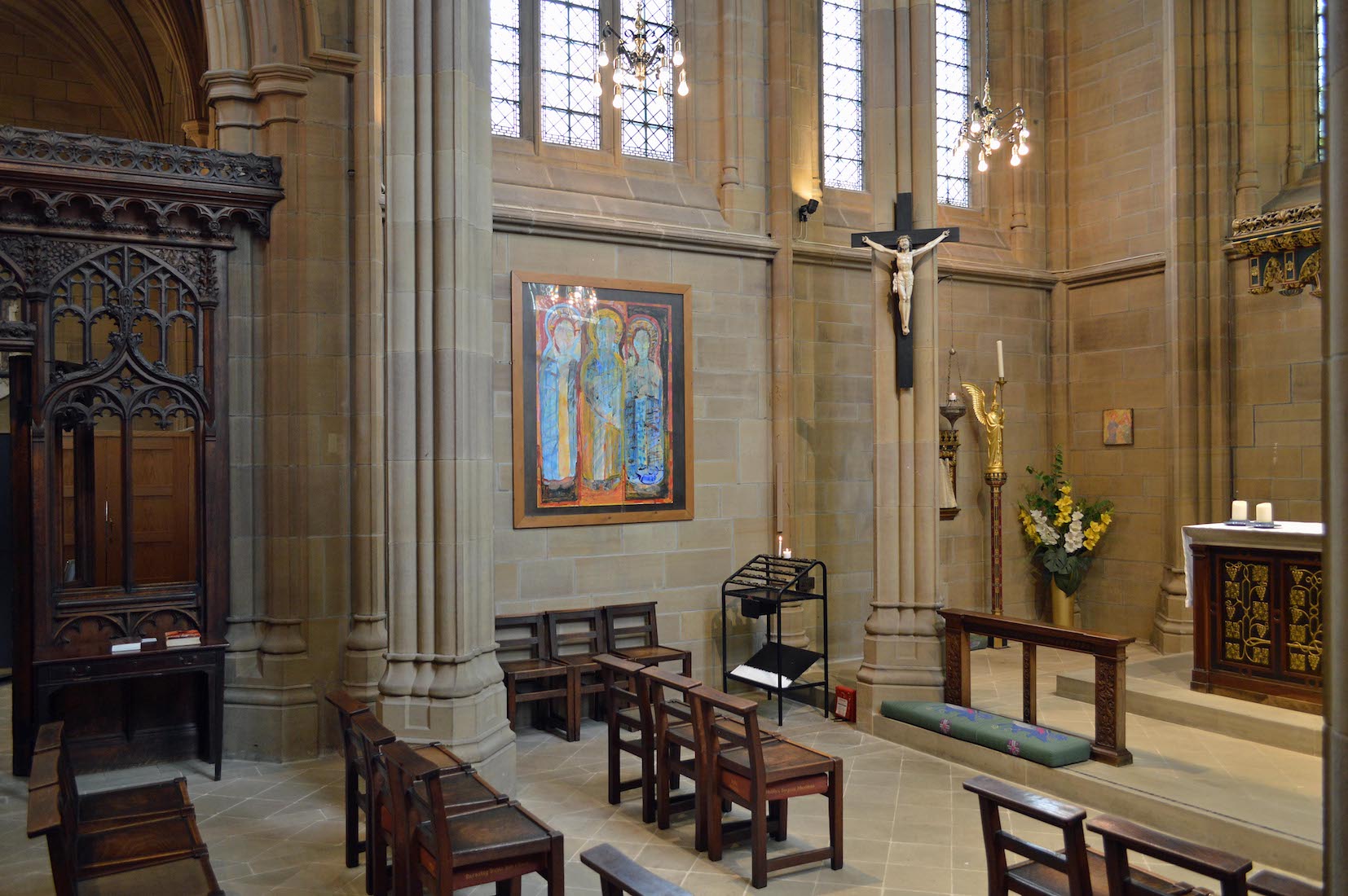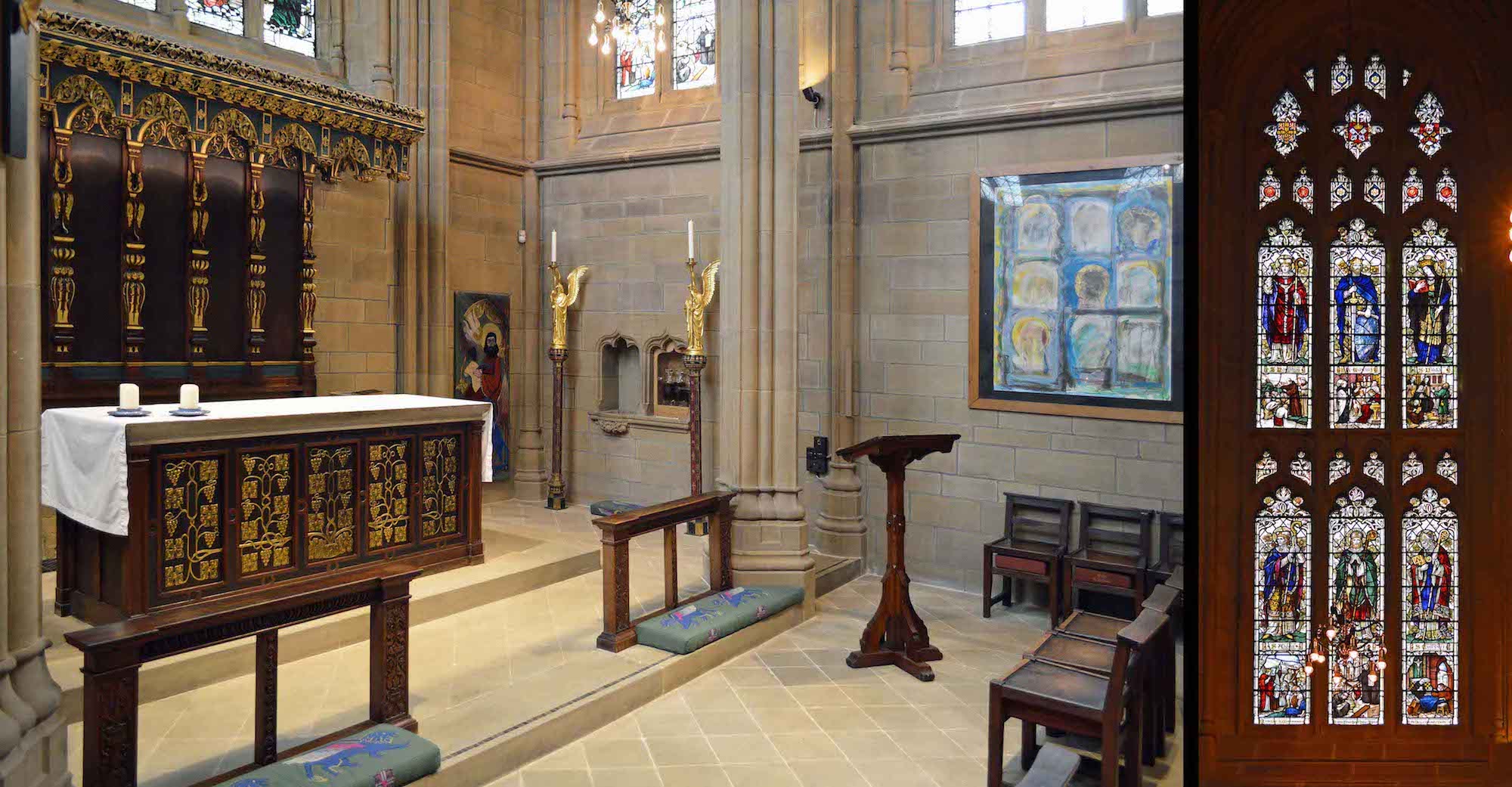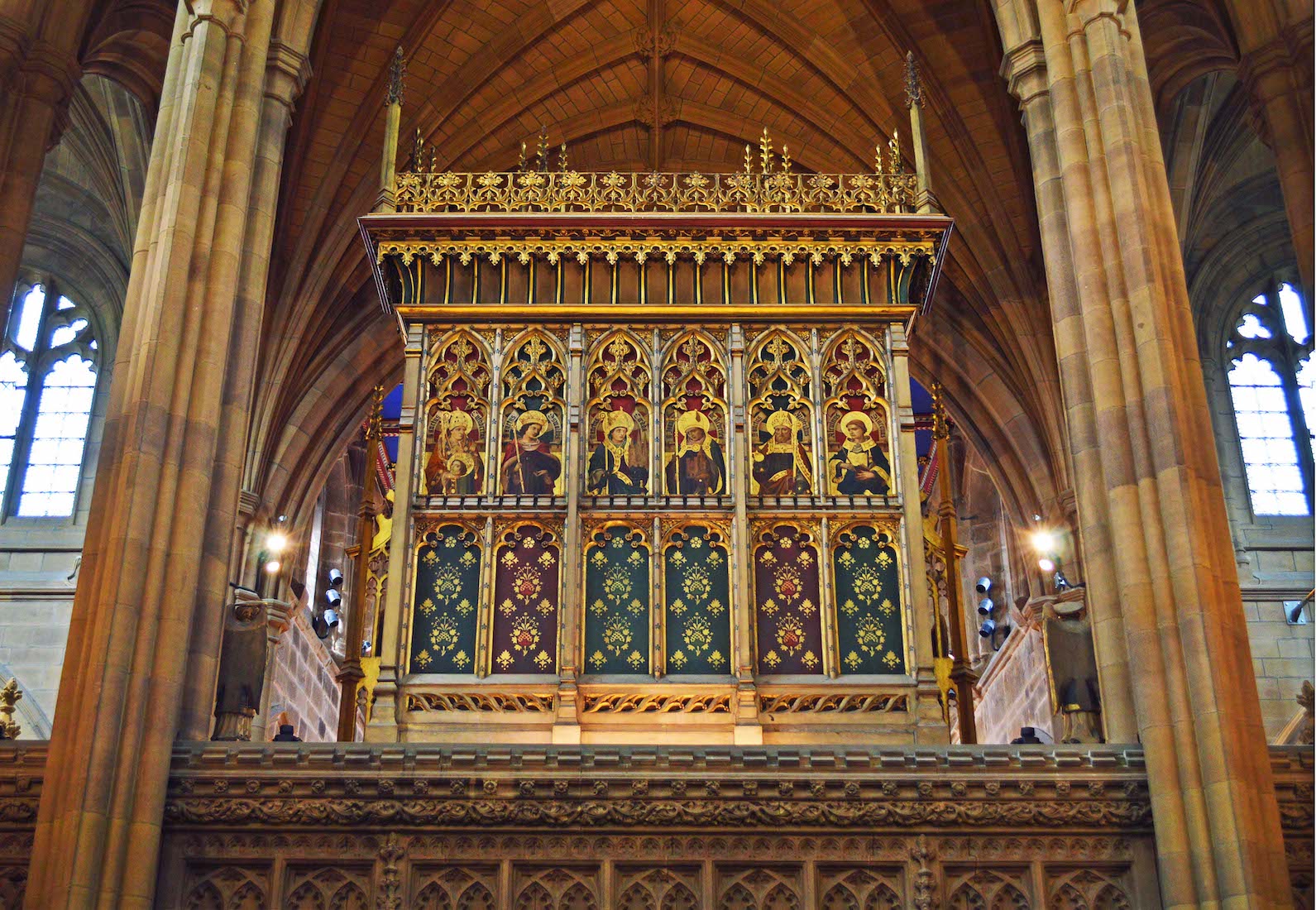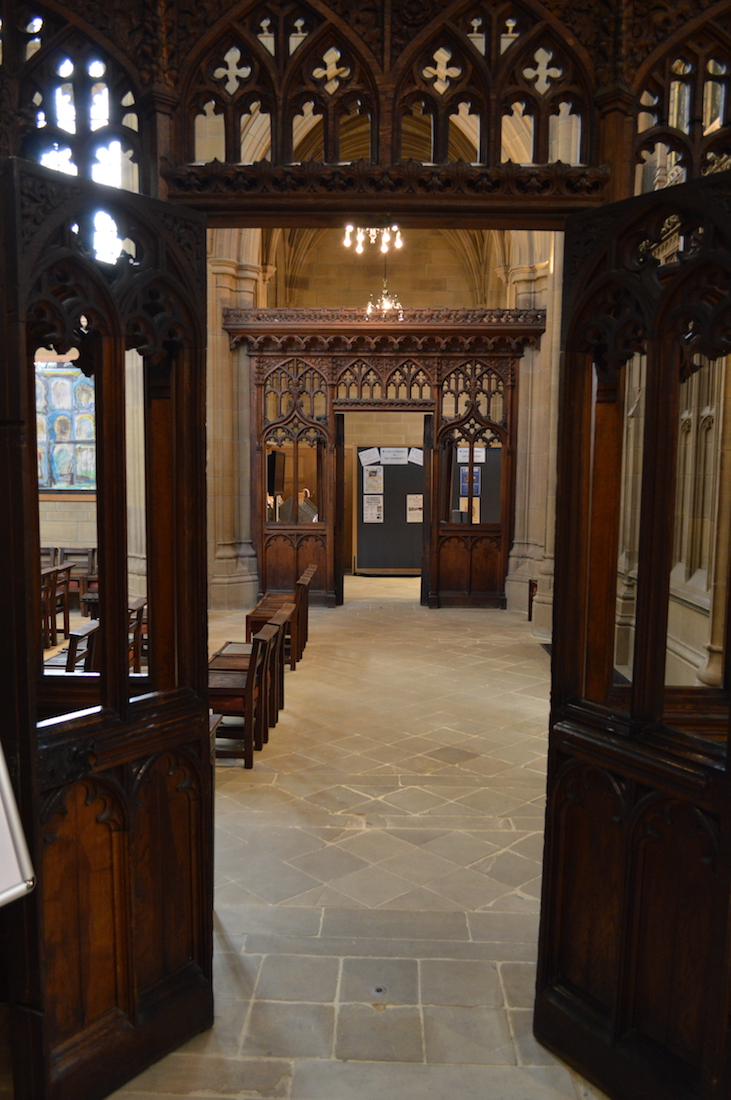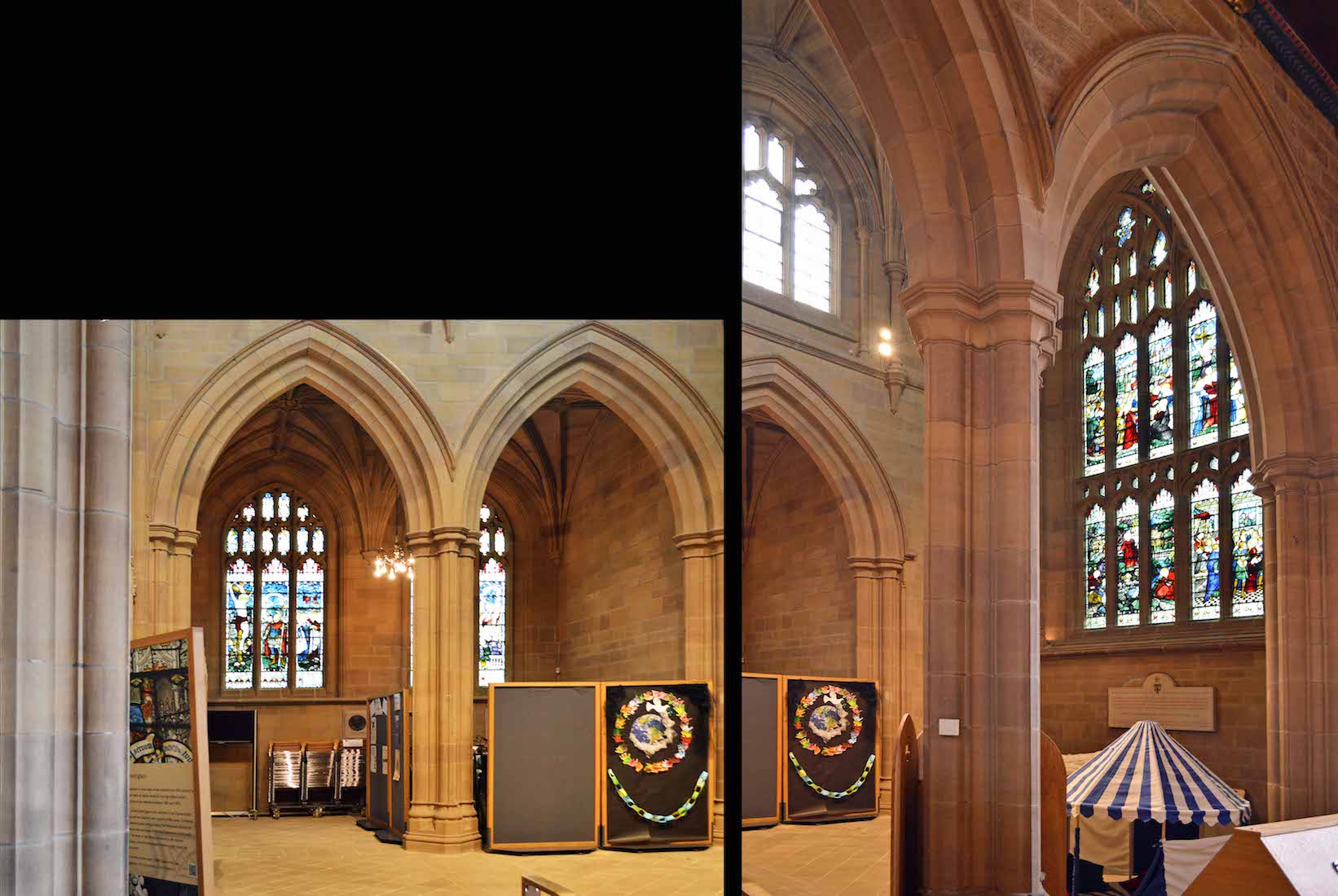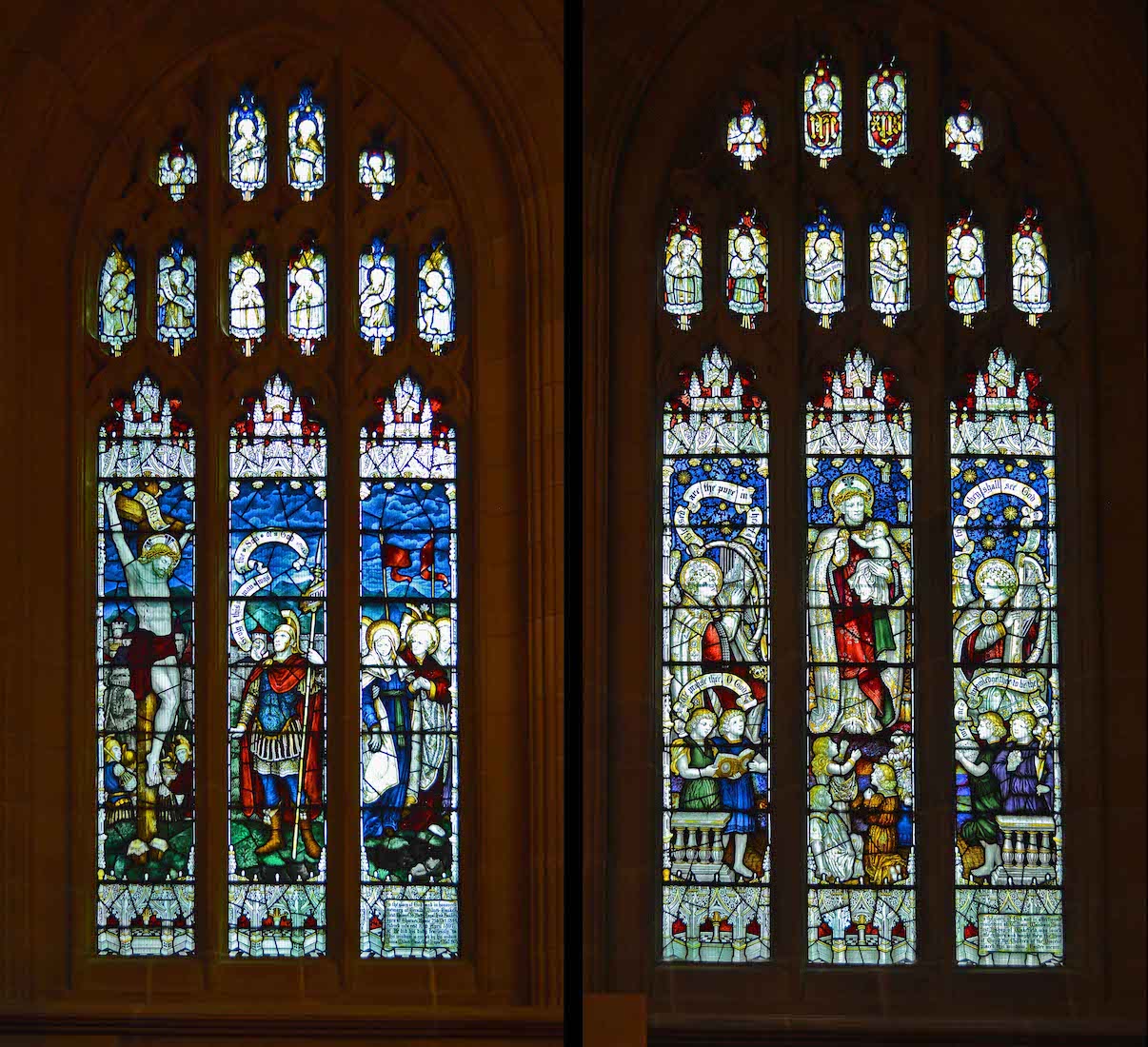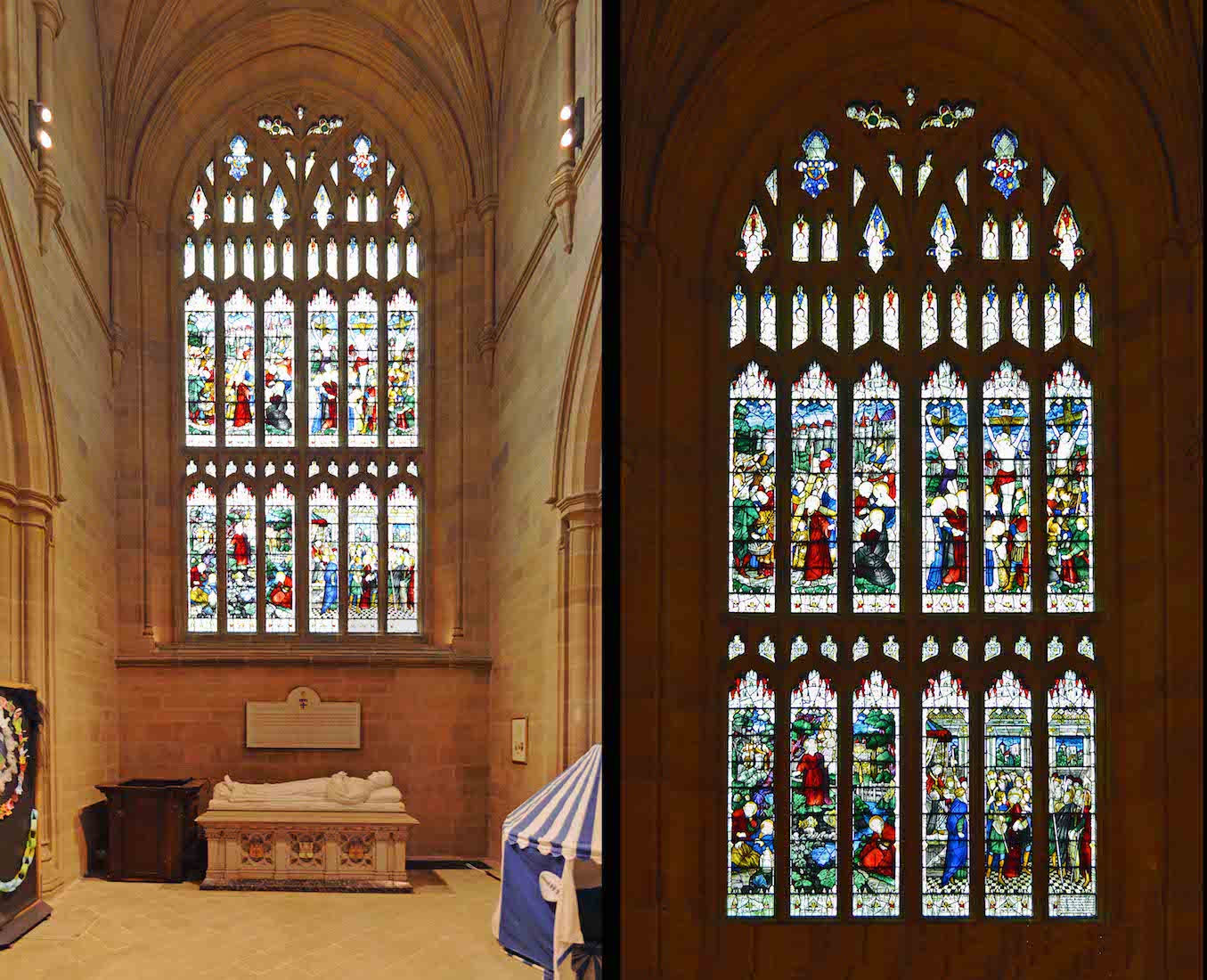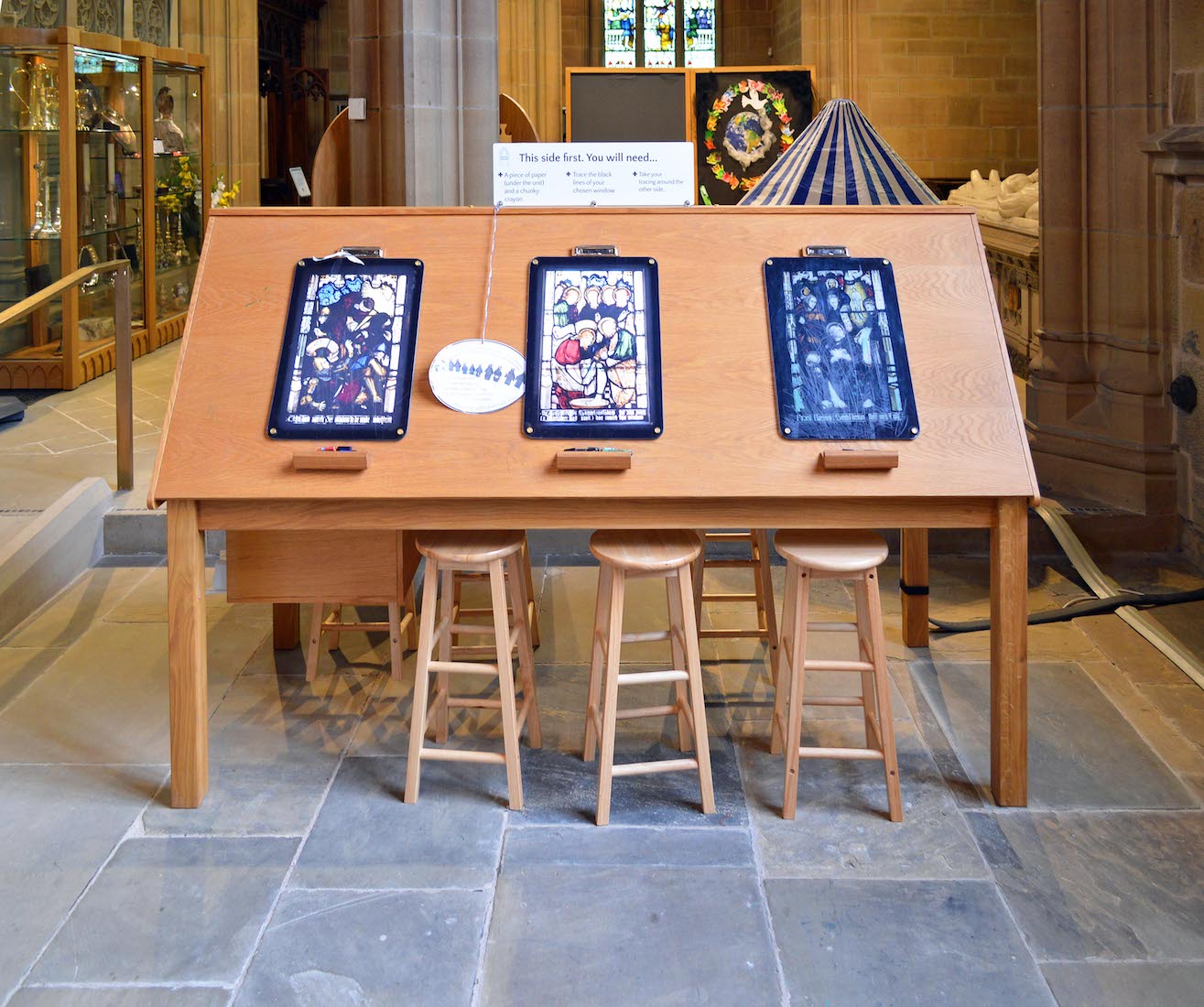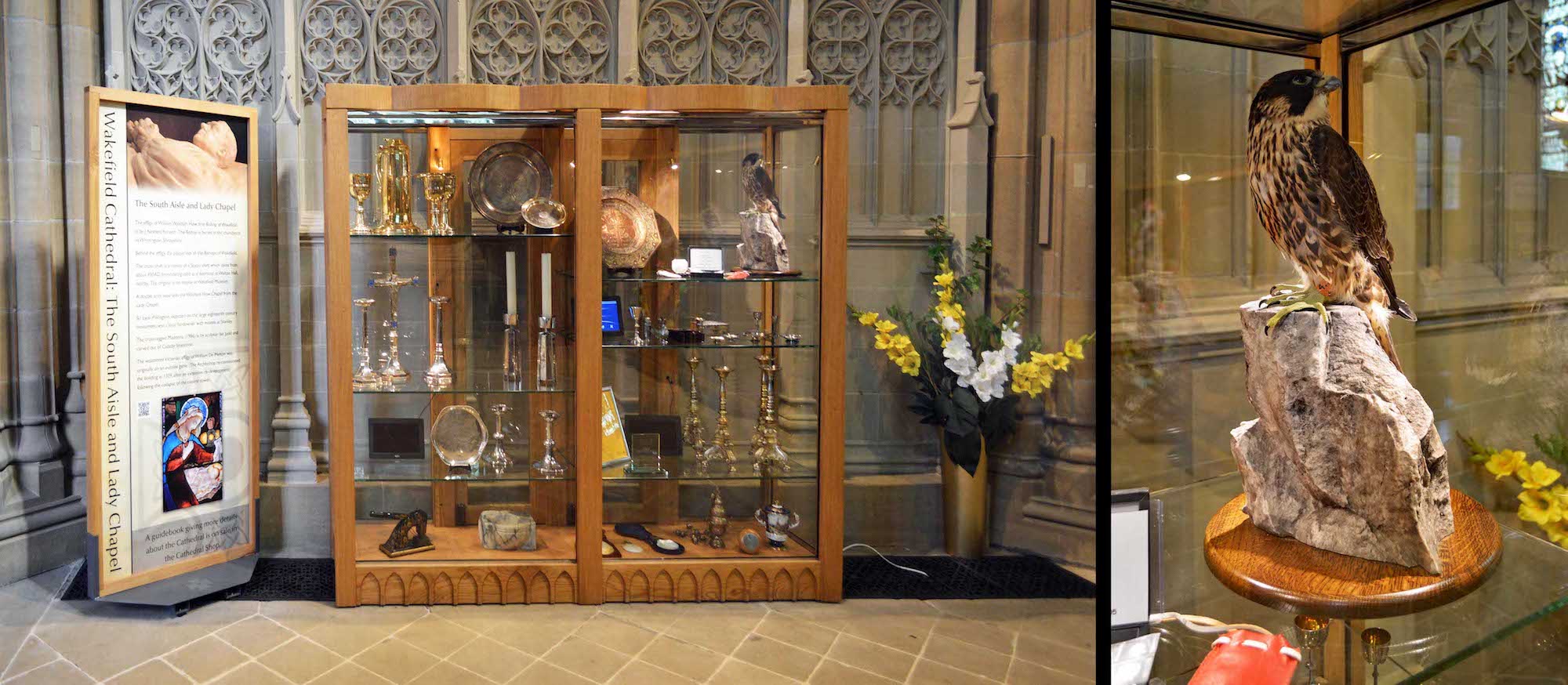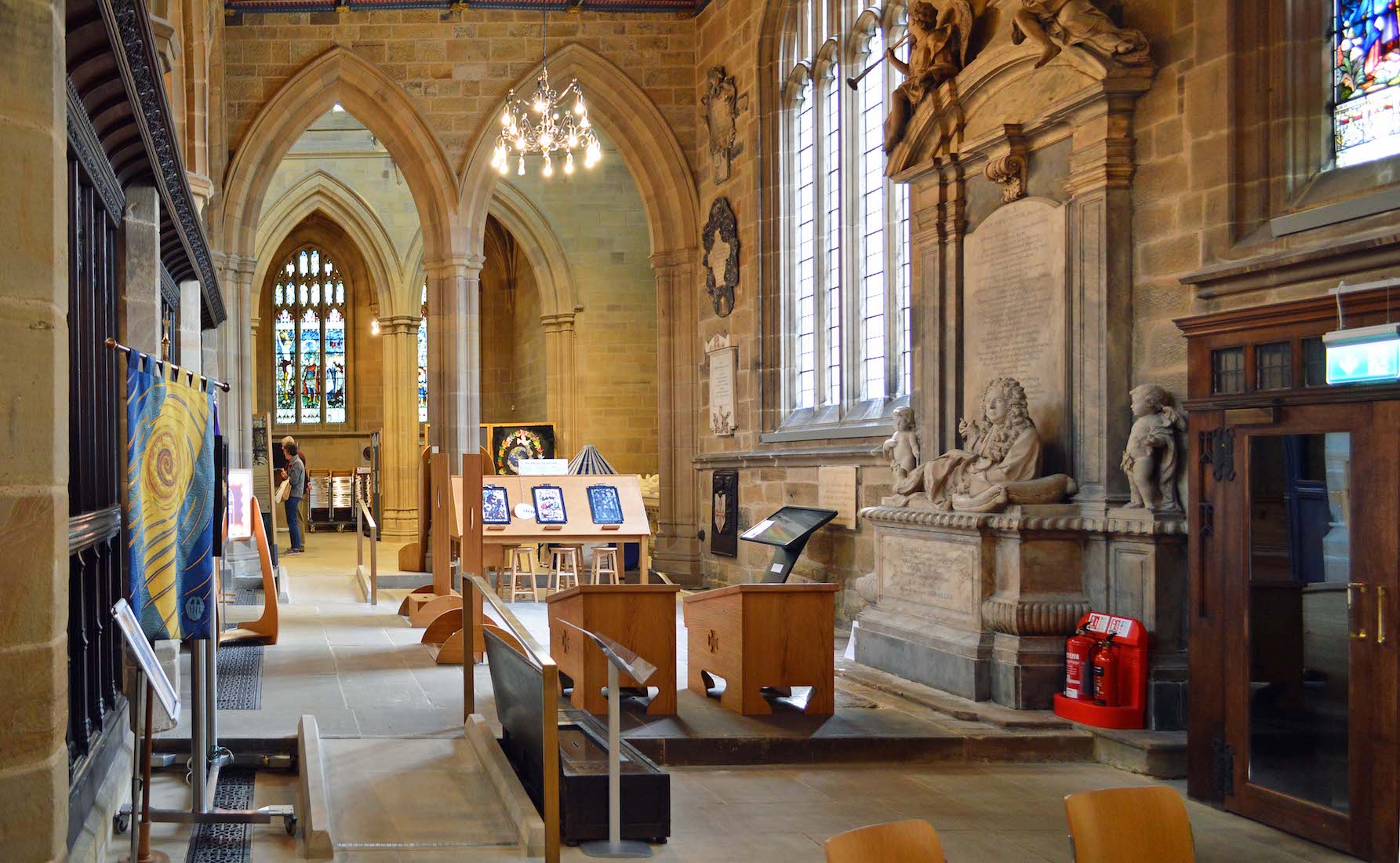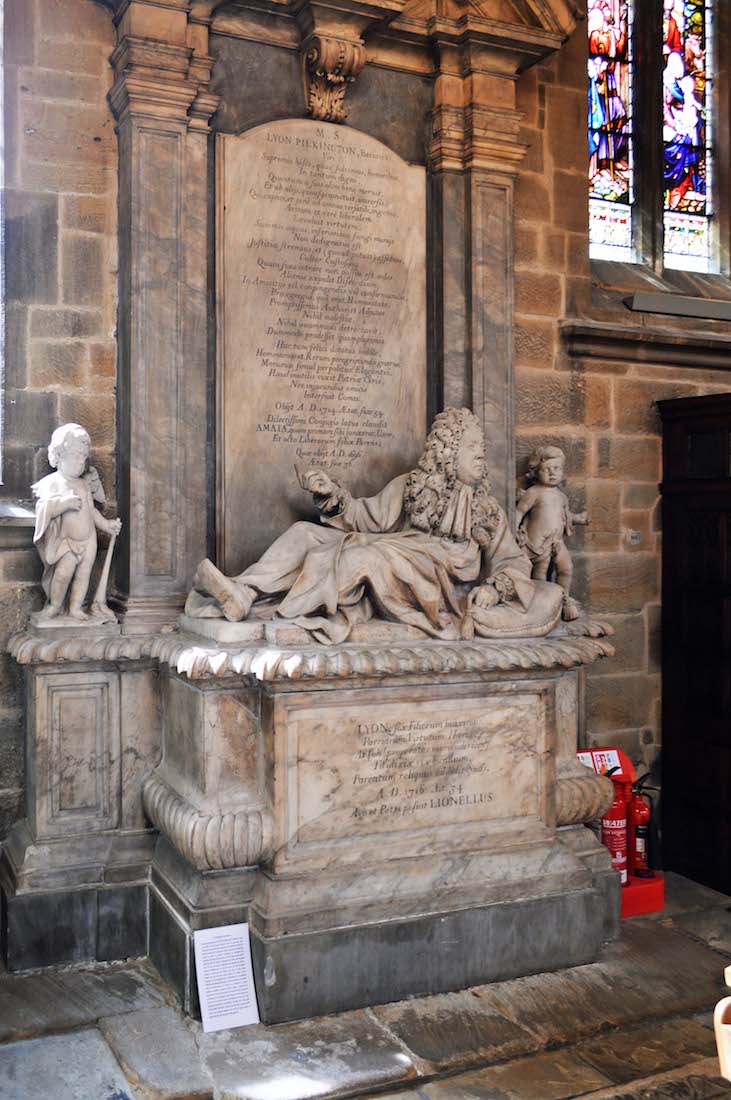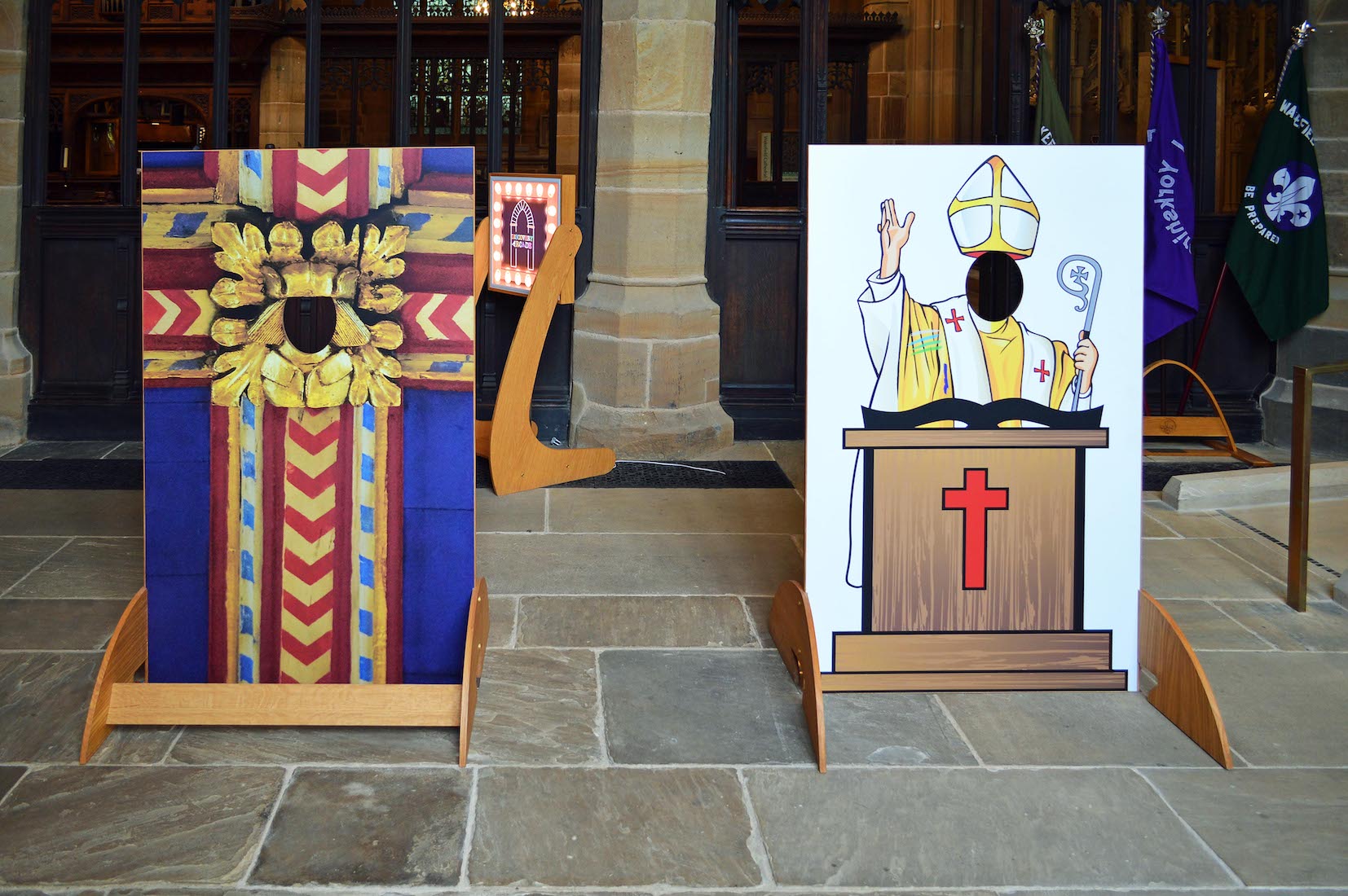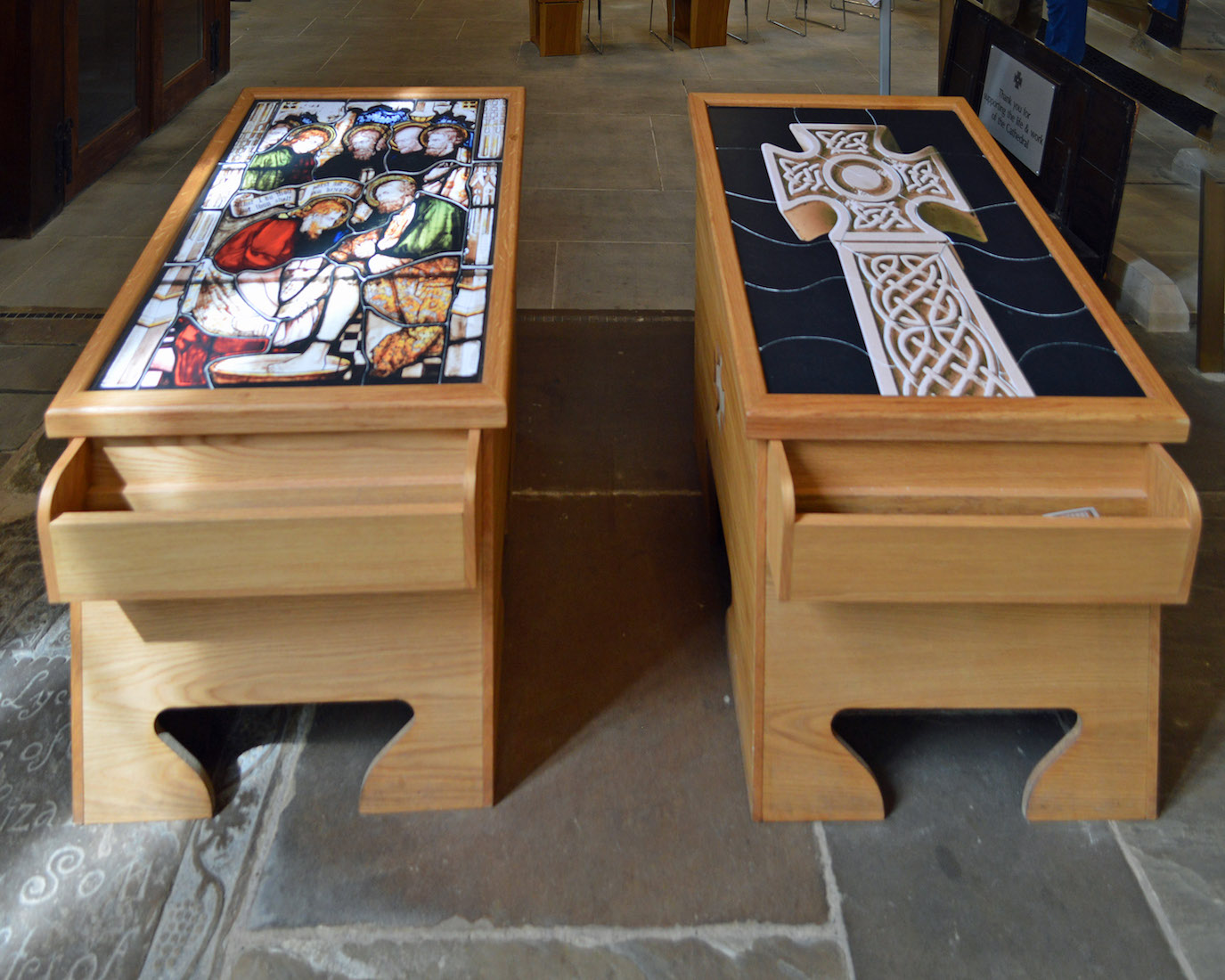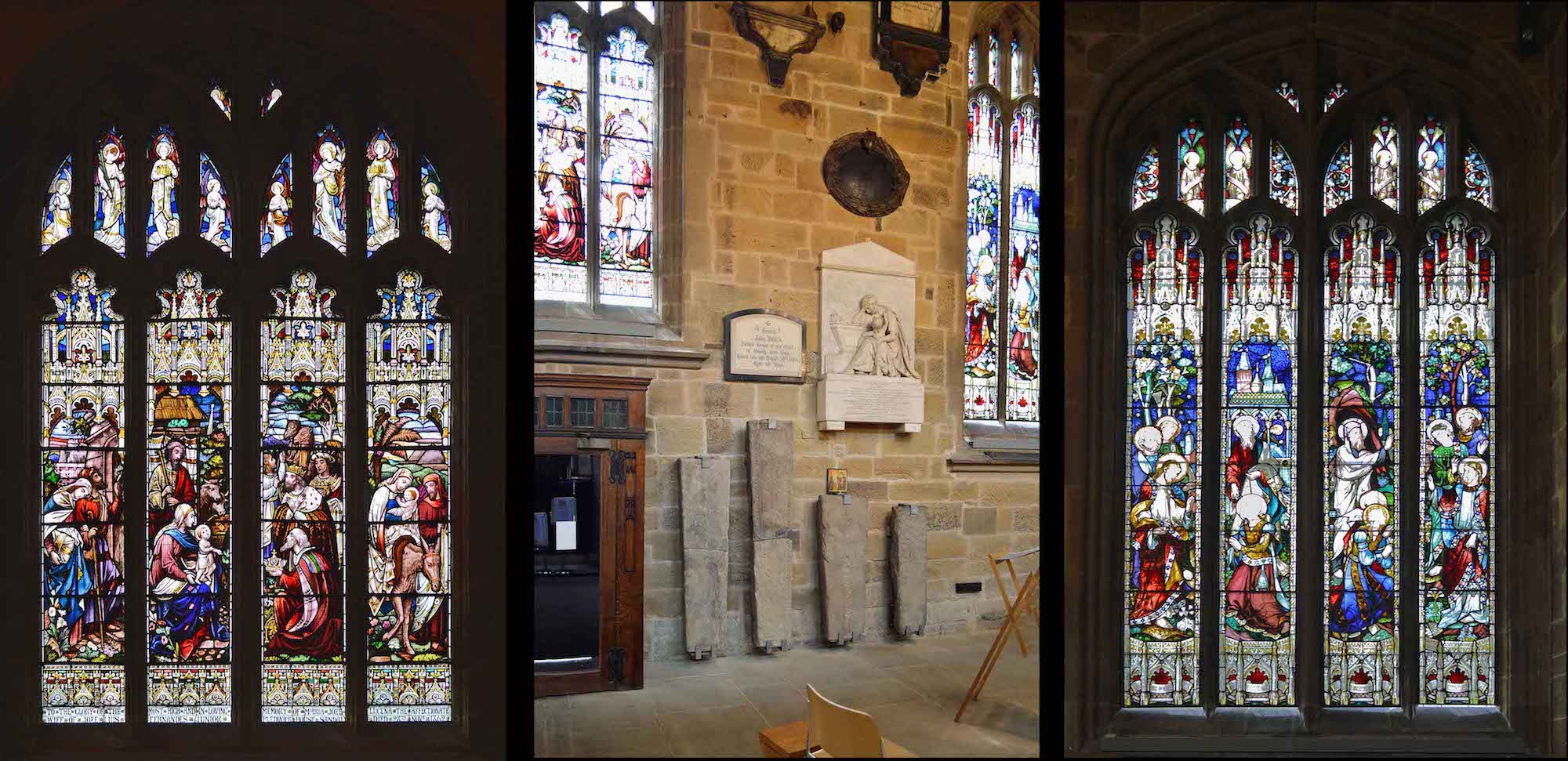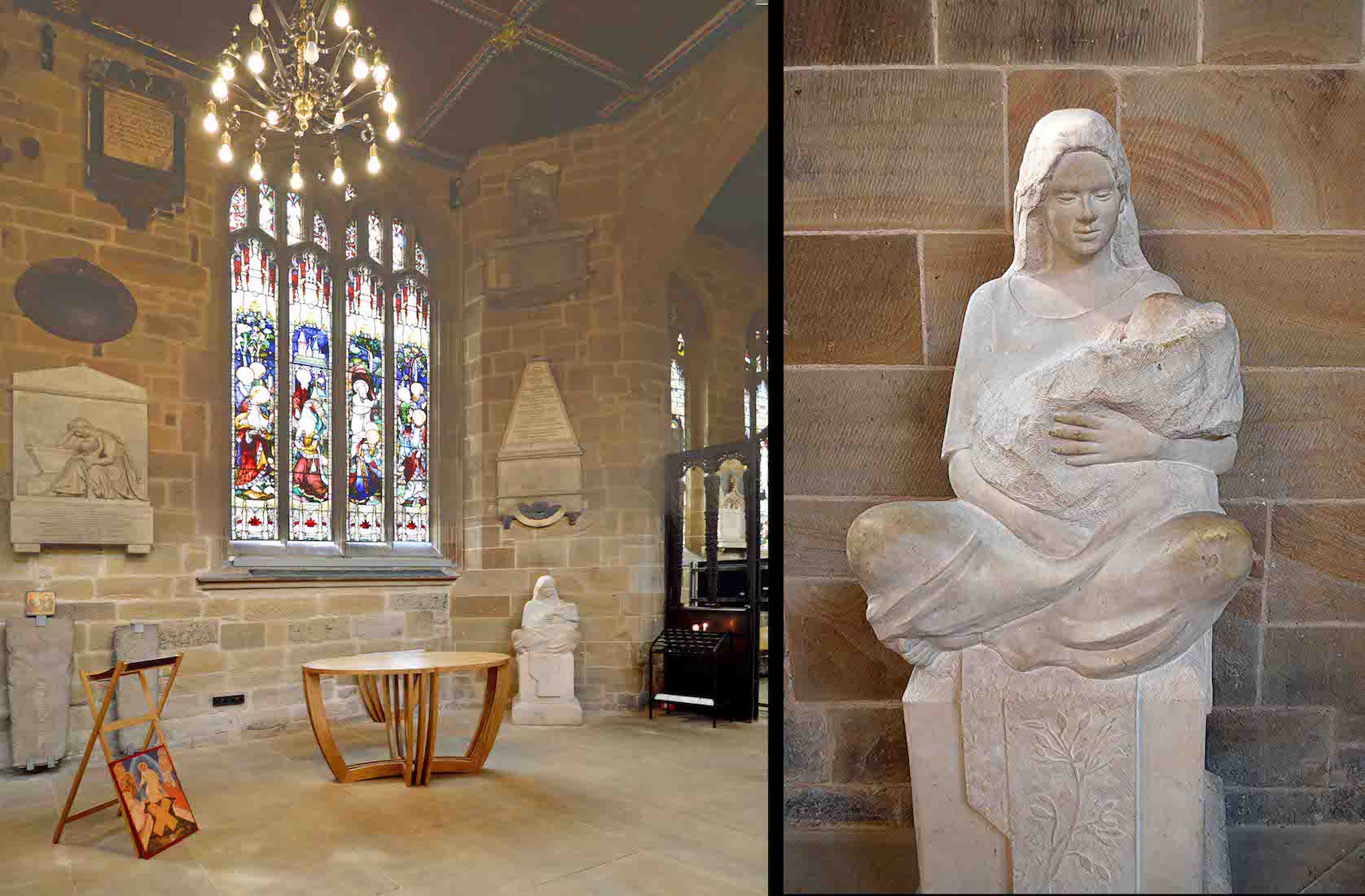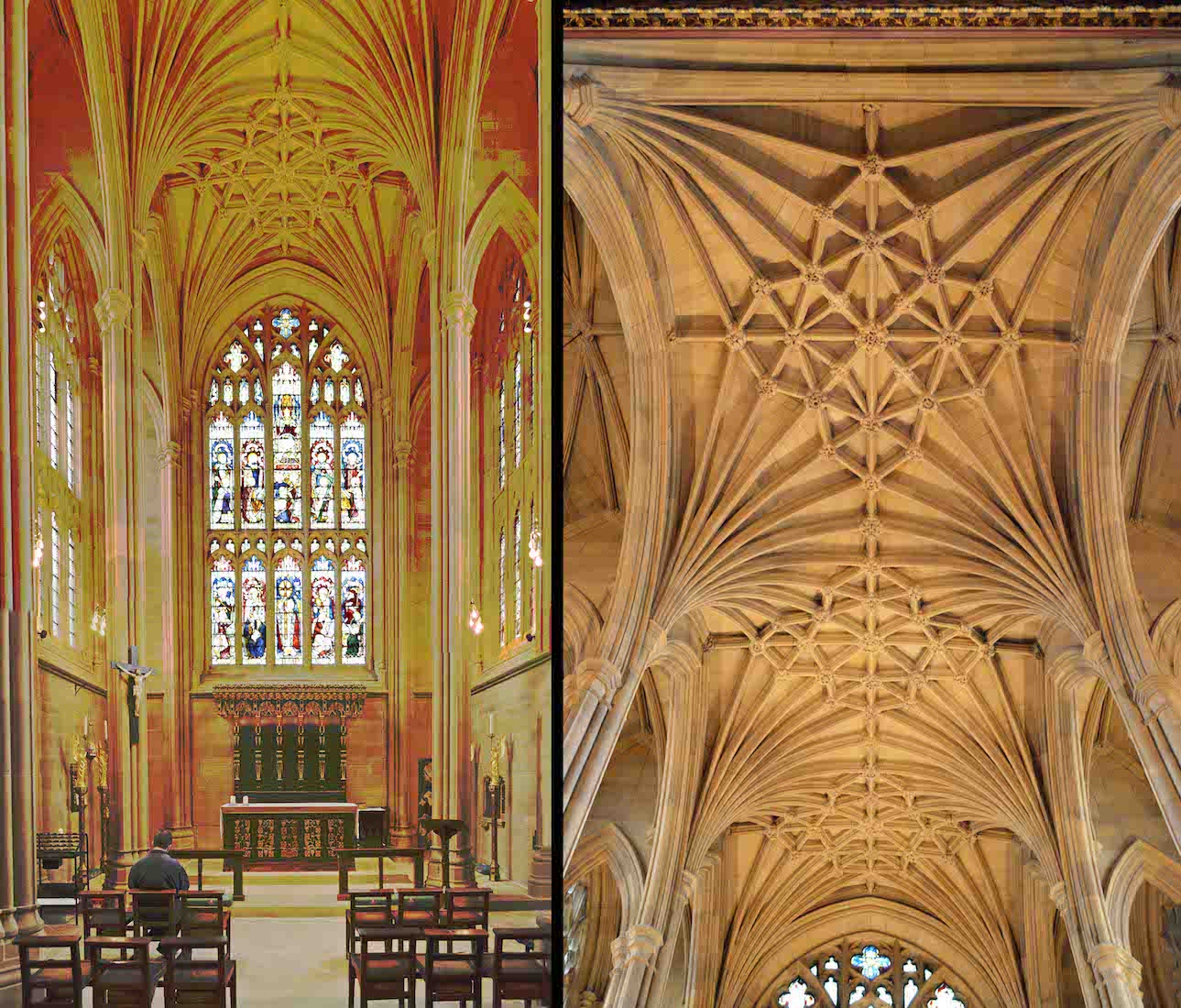
St Mark’s Chapel was built at the East end of the Cathedral in 1904 to designs by John Loughborough Pearson and completed by his son, Frank L Pearson. Some furniture in St Mark's Chapel is by Robert Thompson, the 'Mouseman'. The Chapel is quite narrow and has interesting vaulting. PLAN
42. CHAPEL EAST WINDOW AND ALTAR
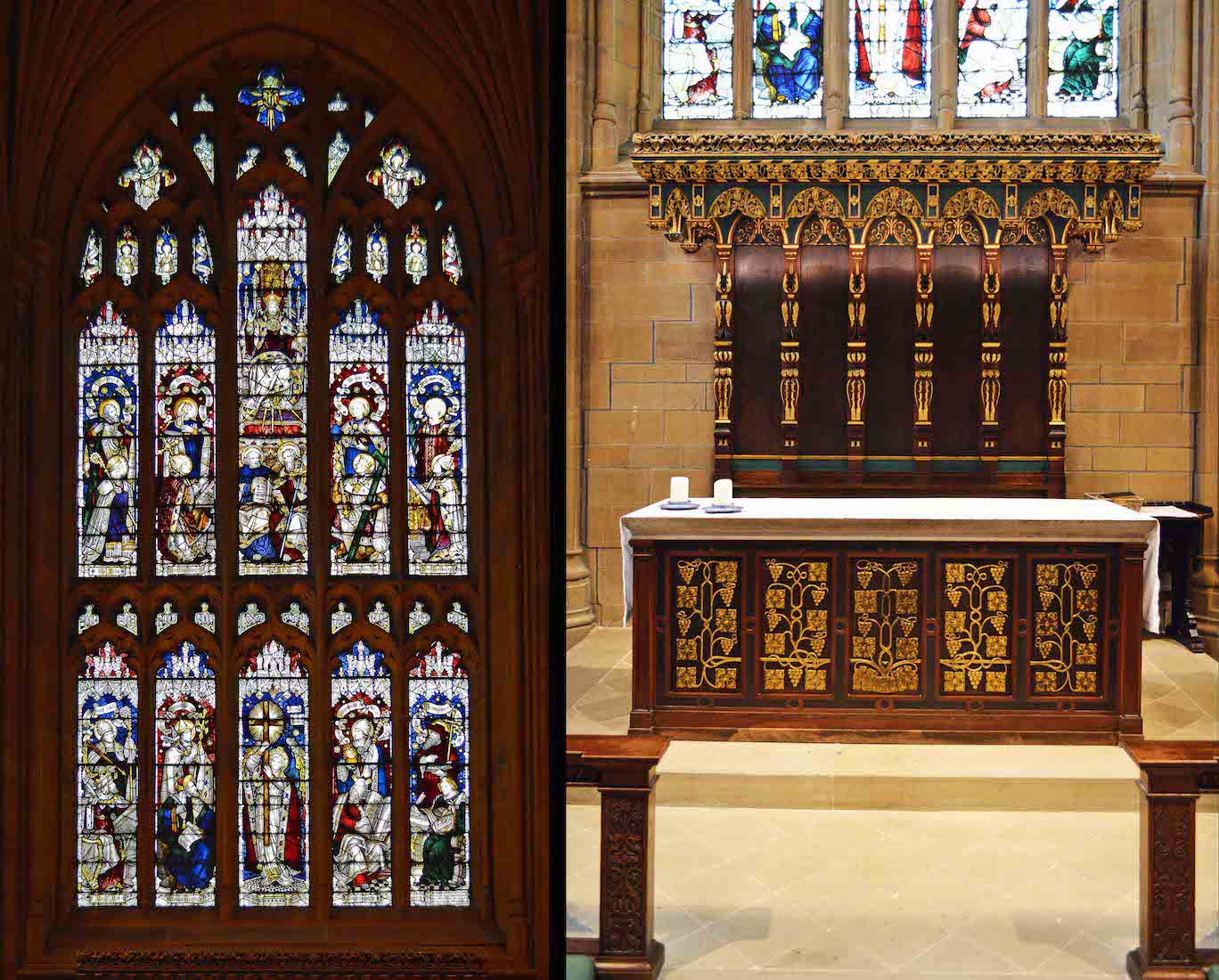
Entering St Mark’s Chapel we are faced with the stained glass window Christ in Majesty (Kempe 1905). Below the window are a matching altar and reredos in dark stain with gilded accents. The altar is decorated with stylized grape vines.
43. NORTH CHAPEL VIEW
Looking to the North side of the Chapel we note a square painting, a crucifix and an aumbry guarded by angels.
44. NORTH CHAPEL ITEMS
The painting is a modern impressionist work showing three anonymous figures! The Crucifix is a little unusual in that it has the figure of Christ on the Cross looking upwards. The aumbry is a niche in the wall for the placing of the Eucharistic Elements. Their presence is shown by the lighted candle. The aumbry is guarded by two gilded angels.
45. LOOKING ACROSS ST MARK’S CHAPEL
Looking across the Chapel to the South side we observe a painted hanging of St Mark, a wall niche containing the holy oils, and another impressionist painting – this of nine anonymous heads. The corner window shows SS Paulinus, Edwin, Hilda, Aidan Wilfrid and Cuthbert, and is by James Powell & Sons of Whitefriars (1914).
46. SOUTH CHAPEL ITEMS
The hanging depicting St Mark at left is by Sylvia Dawson, wife of a former Vice-Provost. It shows Mark and his emblem: the lion. The three holy oils are: • oil of catechumens, • holy chrism, and • oil of the sick. The holy oils are symbols of spiritual nourishment and the light of grace. They are used in the public administration of baptism, confirmation, and anointing of the sick. The painting at right needs some explanation (from someone who can interpret it!).
47. REAR OF SANCTUARY REREDOS
Looking back from St Mark’s Chapel we view the back of the sanctuary reredos. Across the top are six historic figures from early church history, including St Cuthbert, St Oswald and St Wilfrid.
48. THE EAST QUIRE AISLE
The East quire aisle passes right across the back of St Mark’s Chapel, here seen through the doorway at left. We move across to explore the far (South) side.
49. EAST END OF THE SOUTH QUIRE AISLE
Arriving, we pass two stained glass windows on our left, marking the end of the South quire aisle, and come to the short Southward extension of the South transept. For future reference, note the colourfully decorated screen and the blue and white striped parasol.
50. NORTHWEST QUIRE WINDOWS
Here we have the two windows at the end of the South quire aisle. The window at left is The Crucifixion (Kempe 1905), with the centurion looking on, and Mary and John standing by. The window at right is The Children’s Window (Kempe 1905), showing the Risen Christ, serenading angels, and many children gathering around.
52. WILLIAM HOW TOMB
The tomb carries the name of William Walsham How who was the first Bishop of Wakefield. The effigy is by Nesfield Forsyth. The plaque remembers all the Bishops of Wakefield since the Diocese was formed in 1888. The Diocese of Wakefield was dissolved on Easter Day, 2014, when it became part of the new Diocese of Leeds. There is also mention of earlier bishops of York and Ripon.
53. SOUTH QUIRE AISLE ACTIVITY
It is interesting that this part of the South quire aisle has been made into an activity centre for children (and those young in heart!). This table activity allows the examination and reconstruction of some of the stained glass windows in the Cathedral. Notice the glass cabinet to the left.
54. TREASURY CABINET
The glass cabinet contains various Cathedral treasures including chalices, plates, and candlesticks. The peregrine falcon is one of a number of peregrines which have nested in a special nesting box in the Cathedral tower. This has been a contribution by the Cathedral to saving this endangered species.
55. SOUTH QUIRE AISLE
This view looks East from further along the South quire aisle. There is a door to the exterior at right, and an imposing memorial next to it. In front of the memorial are two small sloping desks, and a little beyond and to the left are two mysterious stands, seen side-on. The small ramps allow easy wheelchair access around the Cathedral.
56. SOUTH QUIRE MEMORIAL
The large 18th century monument is for Sir Lyon Pilkington, who was a local landowner with estates at Stanley. Stanley is a village about 2.5 miles (4.0 km) northeast of Wakefield city centre.
57. HEAD STANDS!
The two mysterious stands are in fact head stands! Here you can pretend to be a bishop or a ... someone else! The small sign behind advertises a ‘Discovery Arcade’.
58. TRACING TABLES
With the help of these tables it is possible to reproduce the image of the Saxon Cross, or of Jesus washing the feet of his disciple Peter.
59. SOUTH QUIRE AISLE AND LADY CHAPEL WINDOWS
The South quire aisle now runs into the Lady Chapel. The window at left is above the side door, and the window at right is the next window to the West. The left window depicts The Nativity and Flight into Egypt (Ward & Hughes 1862). The right window shows The Raising of Lazaras (J. Hardman & Co. 1867). On the wall between we see four medieval grave markers found within the Cathedral.


